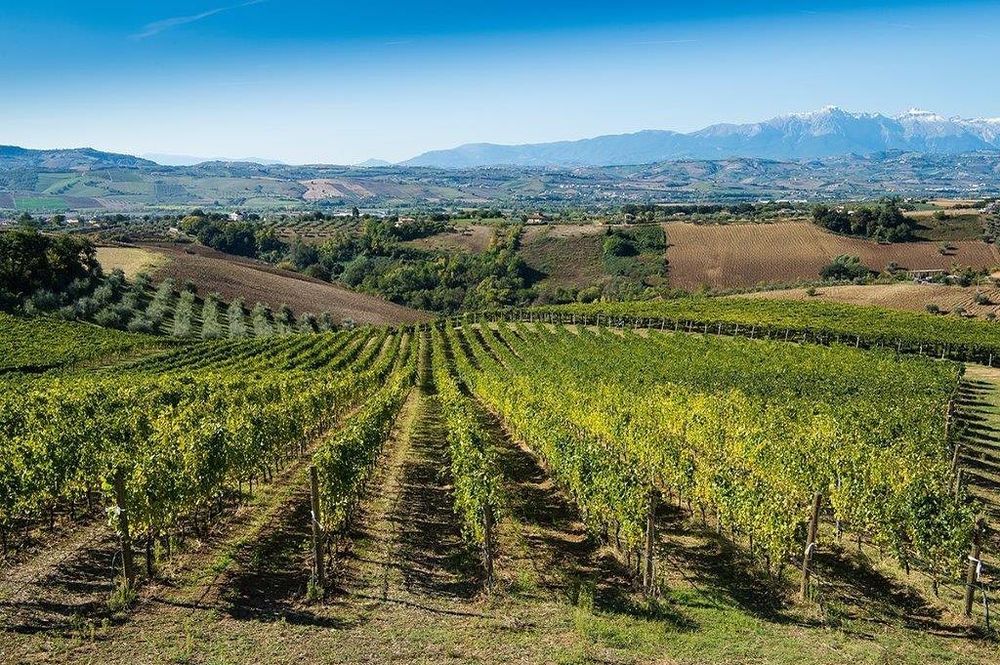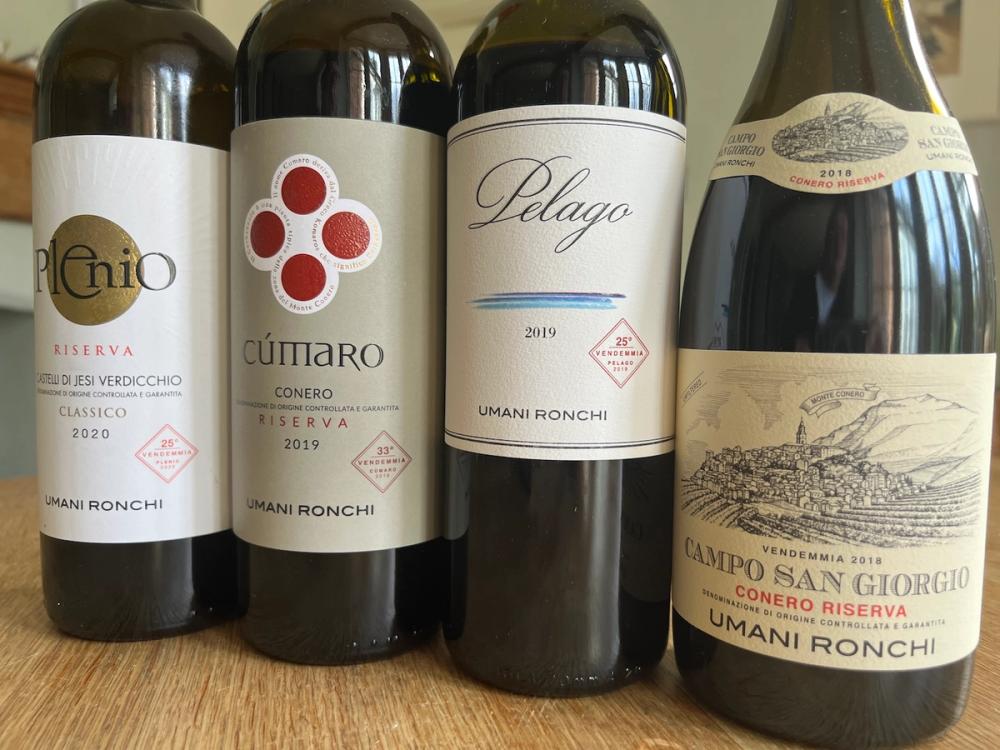Peter Dean: Congratulations on the Gambero Rosso award. What are the main reasons for you winning the award?
Michele Bernetti: Thank you! The award goes to a winery that presents a cohesive, compact yet diversified corporate range in terms of quality. Umani Ronchi has earned the title of ‘Winery of the Year’ due to its extensive variety, complemented by investments in wine tourism, sustainability, and various production aspects.

Michele Bernetti, London's Café Royal, June 26, 2024
What effect does this award have on business? And also internally with the Umani Ronchi team?
Gambero Rosso holds significant prominence in the international wine world, and this award undoubtedly contributes to enhancing our visibility. It also fosters familiarity with wines from lesser-known regions or those less connected to the international mainstream. This is a very important factor for us, as it generates interest and curiosity towards our wines.
What plans do you have in place to continue taking the winery forwards?
We conduct an extensive programme of promotional activities in key markets (Umani Ronchi exports 60%). Additionally, we implement hospitality initiatives in collaboration with our international and domestic partners. We believe that the Marche and Abruzzo regions are relatively little known, and the most effective promotional strategy involves showcasing these distinctive territories to increase appreciation for them.

Tenuta Centovie: biodiversity in Abruzzo
How is business right now?
We achieved success in 2023, and the outlook for 2024 looks promising. Undoubtedly, our exceptional work with white wines like Verdicchio and Pecorino currently positions us favourably in a market that increasingly values these categories.
What are the main challenges?
Economic factors and the deceleration of major economies always exert influence. The slowdown in wine consumption plays a role, albeit to a lesser extent for us, as we still have numerous market opportunities to seize!
Your website is very hard-working and commercial (where a lot of Italian estates focus on their history). Why is this?
Umani Ronchi is a winery with a relatively complex production: three main territories (Castelli di Jesi, Conero, and Abruzzo), a considerable variety of ranges and types, and numerous activities to communicate. Consequently, we believed that it would be best represented by a website addressing these requirements, while also expanding a section dedicated to wine tourism. This aspect is crucial for us, as it represents an important future strategy and focus.
On your website you list your top export markets. The UK is not listed. Where does the UK rank in terms of overall global business for Umani Ronchi? Why is it not one of your top export markets? And what are you doing to rectify this?
The United Kingdom remains a pivotal market for us, holding a position just after the primary ones. Historically, the British market has represented a significant and qualified trade for us, and it has been very stimulating due to its openness and competitiveness.
Unfortunately, we must acknowledge that the economic situation in recent years, combined with increasingly high tariffs, has not supported the development of high-quality Italian wine. In collaboration with our partner Berkmann, we are actively involved in targeted communication efforts to better showcase our regions and productions. This includes initiatives such as visits to Marche, collaborations with British chefs, 'four-hands' dinners, and tastings featuring older vintages.
Can you sum up what are the unique selling points of the wines of Umani Ronchi, over other Italian wines in the market?
A great qualitative coherence with the characteristics of the territory's wines and grape varieties.
A quality production diversification with well-defined and distinct wines.
A style that aims to correspond to our motto "Great Wines but not Big Wines."
Tasting the new Umani Ronchi vintages

Plenio Verdicchio, Castelli di Jesi Verdicchio, Classico Riserva, Umani Ronchi 2020
Ripe, fruit-forward style of Verdicchio with sweet, peach and almond aromatics. In the mouth the wine is fresh and tasty, oleaginous texture, with increasing citrus acidity and grip on the palate. The wine feels ‘bigger’ than its 13% abv suggests, with decent power and breadth of flavour, a nice hint of almond and a saline finish which entices the second glass. (RRP £22)
Cúmaro Rosso, Conero Riserva, DOCG Umani Ronchi 2019
From a south-east facing vineyard 150-200 metres altitude with deep, chalky loam soils. Aged in oak barrels for at least 18 months this is an impressive and approachable 100% Montepulciano (Italy’s second most widely dispersed variety, not be confused with the Tuscan wine Vino Nobile di Montepulciano). Bold and fruity aromas – red plum, cherry and hint of candy tobacco and coconut husk (broom). Warm and soft on the palate, there’s structure here but the ripe tannins are well integrated into layers of plush mulberry and red fruit, lovely balance. It’s sun-kissed alright but the wine is nicely balanced and doesn’t feel heavy or with its alcohol too apparent. Nice dry finish with a touch of vanilla pod. (14% abv). (RRP £23)
Pelago Marche Rosso IGT, Umani Ronchi 2019
Only produced in the best vintages this wine won Best Red Wine trophy at London’s International Wine Challenge on its debut vintage in 1997. The wine is a blend of Montepulciano and Cabernet Sauvignon – fermented in steel vats and then aged for 14 months in French oak barrels – and has that Super Tuscan feel of a confluence of Bordeaux and the heartland of Italy. The aromas are intense, bold and sultry with black fruit, pepper, cardamon and liqourice. In the mouth the wine is fresh and warm, fruits of the forest take the lead followed by mulberry, and vanilla pod. The wine goes on a journey, fresh, easy going, then more structured ending on a pleasing dry finish with dusty tannins and a hint of dark chocolate. 14% and impressive. (RRP £32)
Campo San Giorgio, Conero Riserva DOCG, Umani Ronchi 2018
Classy, medium to full-bodied Montepulciano with considerable scope for ageing. The fruit comes from 15-year-old vines facing south-east, 150 metres high on soils of deep chalky/clay loam. After malolactic fermentation the wine is aged for 12 months in small casks then large vats for another 12 months, unfiltered and unfined, then aged for another 8-10 months before being released onto the market. On the nose the wine has far greater complexity than the Cúmaro Rosso – you pick up delightful and enticing aromas of cherry and plum with deeper suggestions of liquorice and vanilla. In the mouth the wine is fresh, light with a superb, micro-fine mesh of ripe tannins that rasp the palate and keep it structured and fit for further ageing. Very nice 13.5% abv. (£39)
































